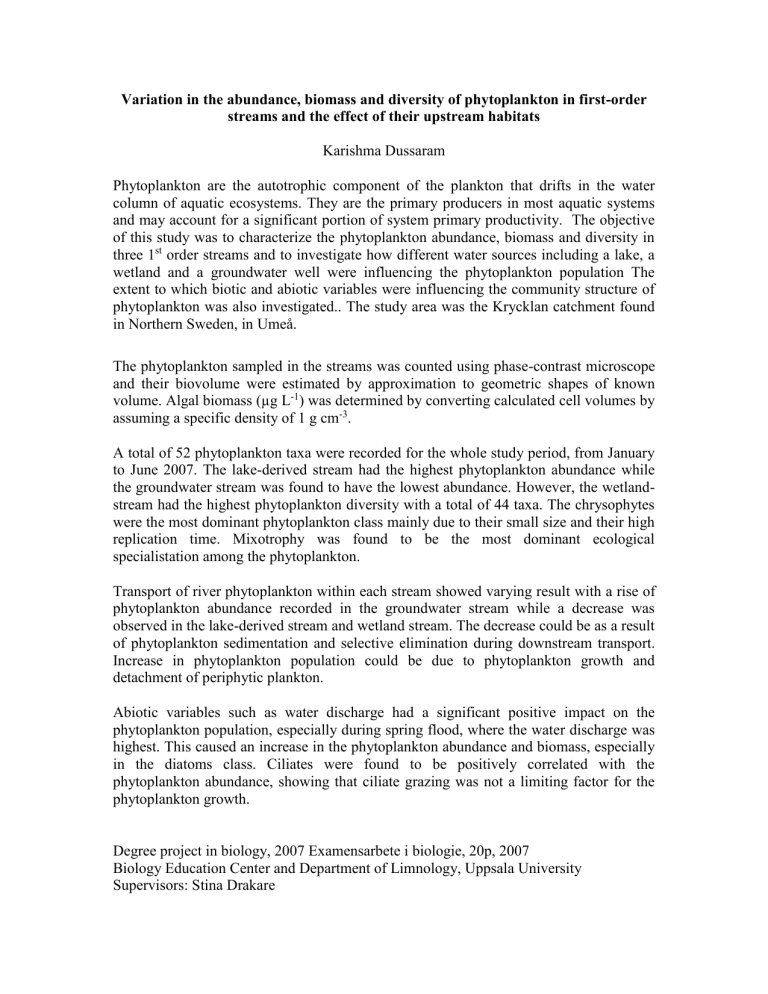Variation in the abundance, biomass and diversity of phytoplankton

Variation in the abundance, biomass and diversity of phytoplankton in first-order streams and the effect of their upstream habitats
Karishma Dussaram
Phytoplankton are the autotrophic component of the plankton that drifts in the water column of aquatic ecosystems. They are the primary producers in most aquatic systems and may account for a significant portion of system primary productivity. The objective of this study was to characterize the phytoplankton abundance, biomass and diversity in three 1 st
order streams and to investigate how different water sources including a lake, a wetland and a groundwater well were influencing the phytoplankton population The extent to which biotic and abiotic variables were influencing the community structure of phytoplankton was also investigated.. The study area was the Krycklan catchment found in Northern Sweden, in Umeå.
The phytoplankton sampled in the streams was counted using phase-contrast microscope and their biovolume were estimated by approximation to geometric shapes of known volume. Algal biomass (µg L -1
) was determined by converting calculated cell volumes by assuming a specific density of 1 g cm
-3
.
A total of 52 phytoplankton taxa were recorded for the whole study period, from January to June 2007. The lake-derived stream had the highest phytoplankton abundance while the groundwater stream was found to have the lowest abundance. However, the wetlandstream had the highest phytoplankton diversity with a total of 44 taxa. The chrysophytes were the most dominant phytoplankton class mainly due to their small size and their high replication time. Mixotrophy was found to be the most dominant ecological specialistation among the phytoplankton.
Transport of river phytoplankton within each stream showed varying result with a rise of phytoplankton abundance recorded in the groundwater stream while a decrease was observed in the lake-derived stream and wetland stream. The decrease could be as a result of phytoplankton sedimentation and selective elimination during downstream transport.
Increase in phytoplankton population could be due to phytoplankton growth and detachment of periphytic plankton.
Abiotic variables such as water discharge had a significant positive impact on the phytoplankton population, especially during spring flood, where the water discharge was highest. This caused an increase in the phytoplankton abundance and biomass, especially in the diatoms class. Ciliates were found to be positively correlated with the phytoplankton abundance, showing that ciliate grazing was not a limiting factor for the phytoplankton growth.
Degree project in biology, 2007 Examensarbete i biologie, 20p, 2007
Biology Education Center and Department of Limnology, Uppsala University
Supervisors: Stina Drakare






